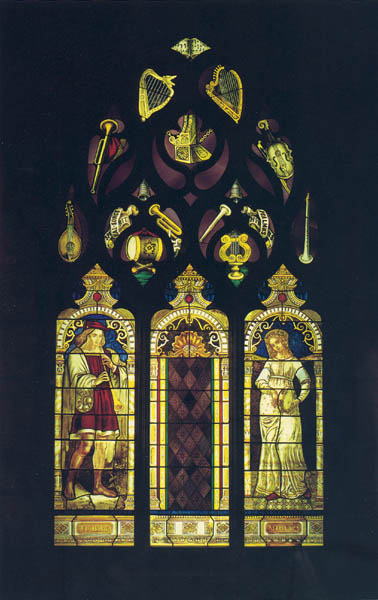Image Details

Metropolitan Museum of Art, New York, NY
Jubal and Miriam, biblical figures famous for their music, appear in a stained glass window fashioned by William Jay Bolton (1816–1884) and his brother John Bolton (1818–1898).
Jubal, the Bible tells us in one of its genealogical lists, was the inventor of instrumental music, “the father of all those who play the lyre and pipe” (Genesis 4:21). Miriam sang God’s praises after the Reed Sea crossing (Exodus 15). Although the Bible attributes the bulk of this lengthy song to Moses, and only a short repetition of it to Miriam, many scholars contend that the attribution to Moses is false, inserted at some later time by editors of the original biblical text. These editors took the words right out of Miriam’s mouth—and gave them to Moses. It was Miriam, in fact, who led all her people in rejoicing after their deliverance from Pharaoh’s army.
One of 60 windows executed for St. Ann and the Holy Trinity Episcopal Church in Brooklyn, New York, between 1844 and 1848, “Jubal and Miriam” originally stood in the church’s organ loft. The Boltons decorated the window with instruments that are not necessarily mentioned in the Bible, but whose sounds are reproducible on the organ. As the years passed and the church repaired and built up its organ, the window became half covered. So that the window could again be seen and appreciated, the church gave the masterpiece, in 1985, to the Metropolitan Museum of Art.
